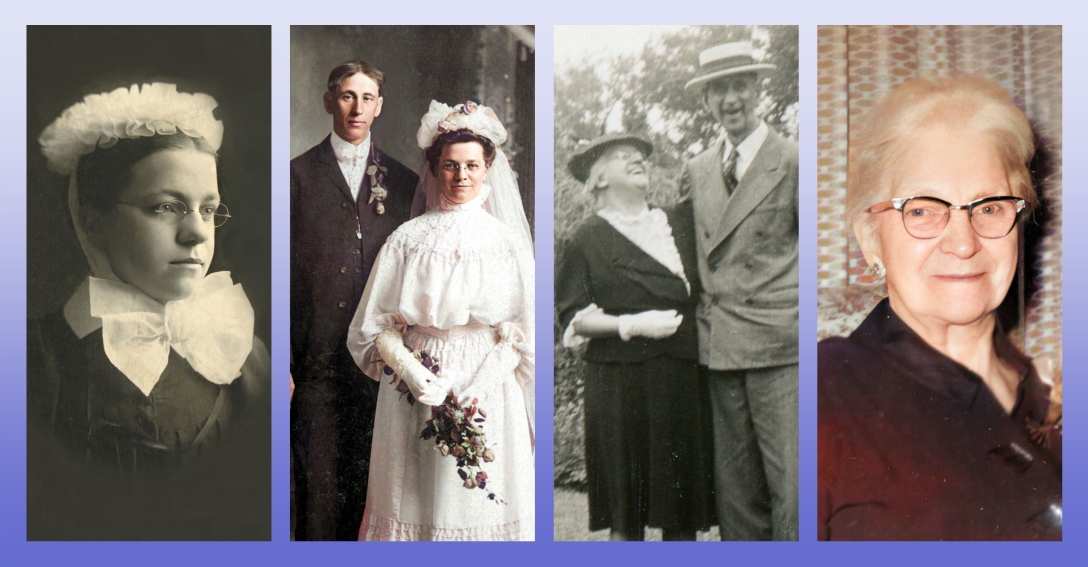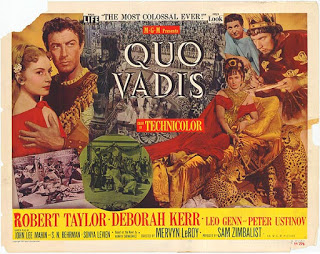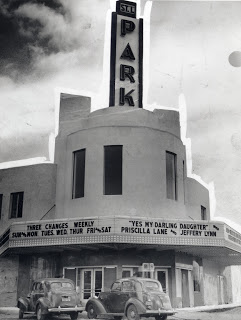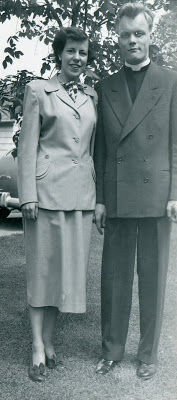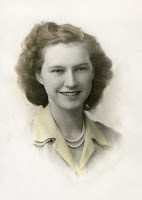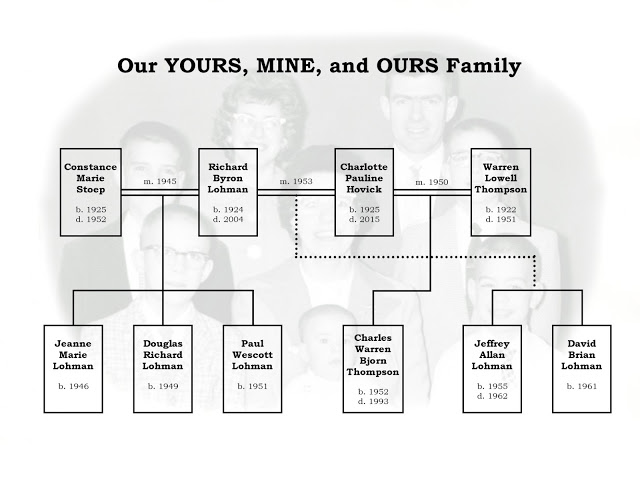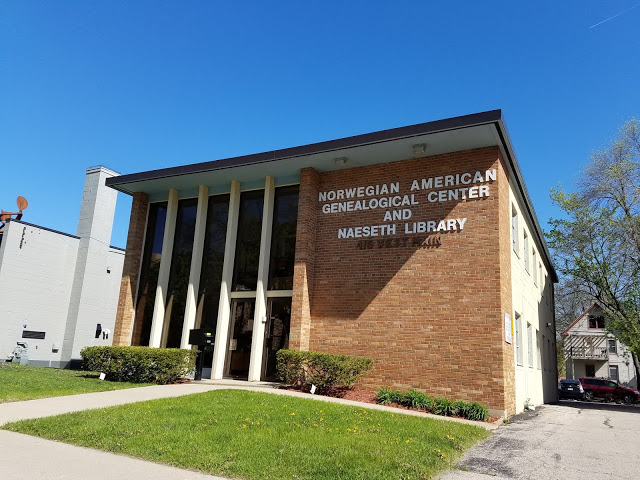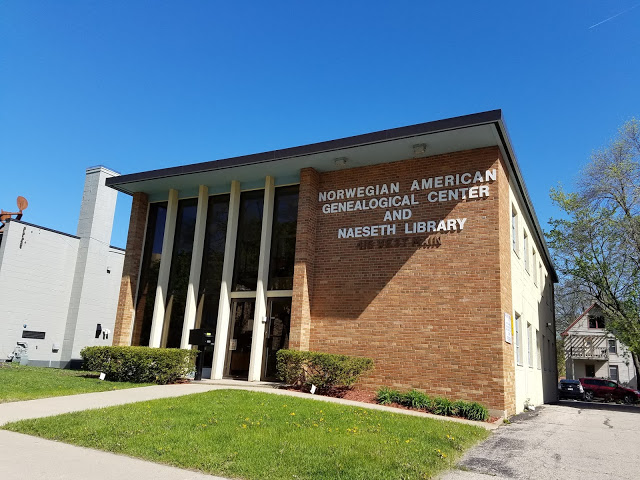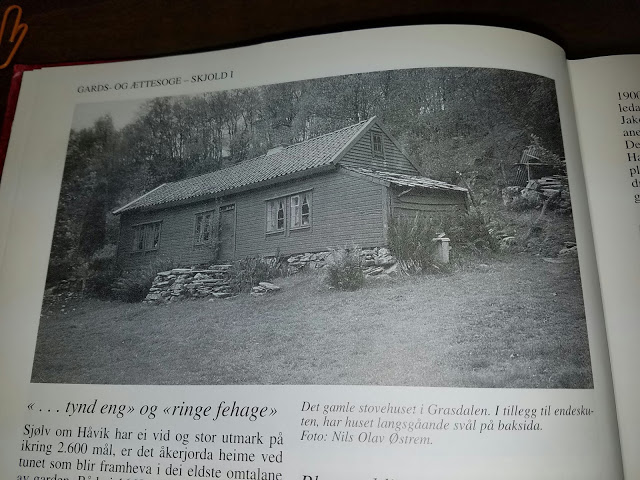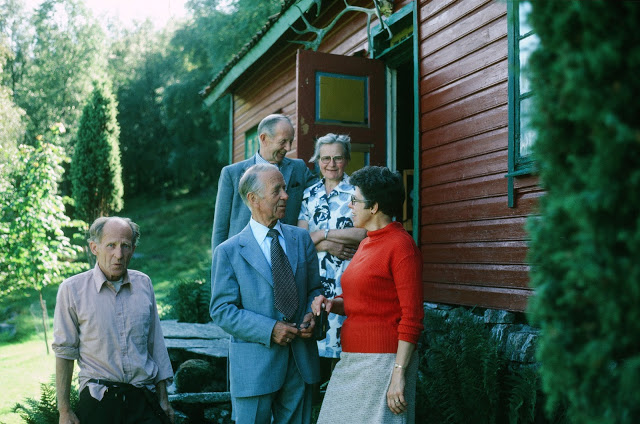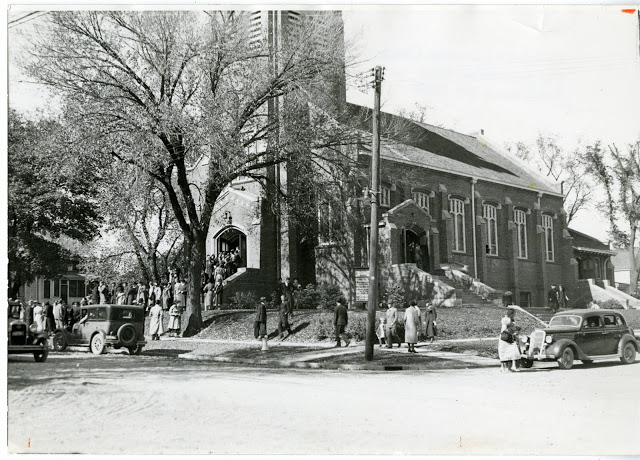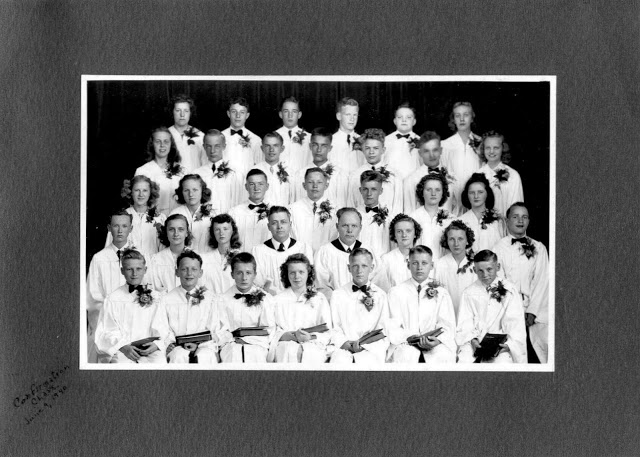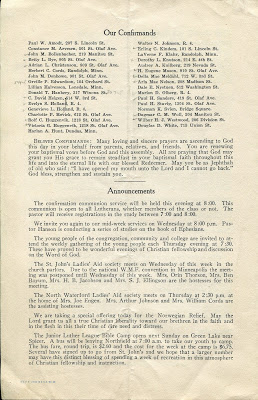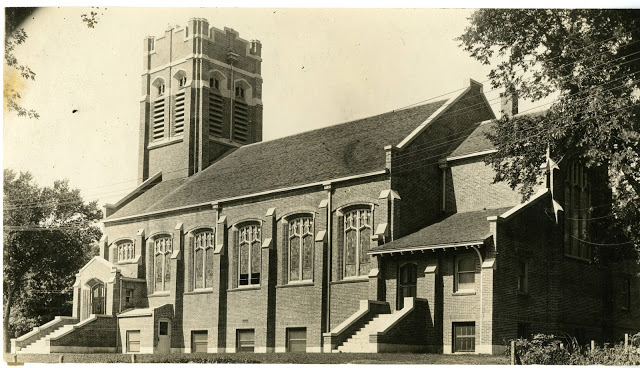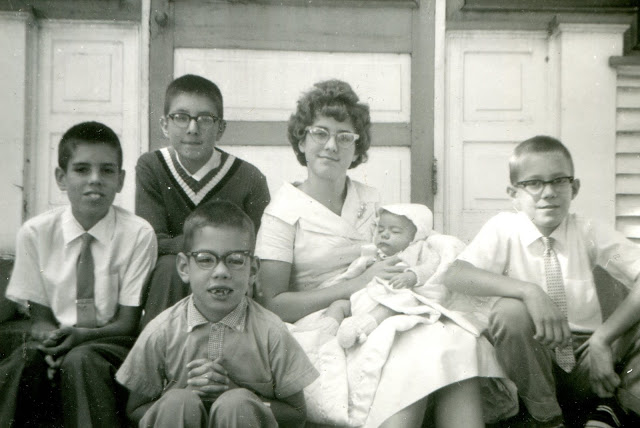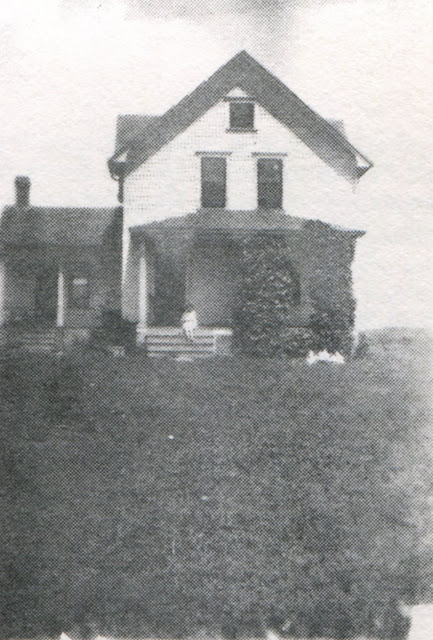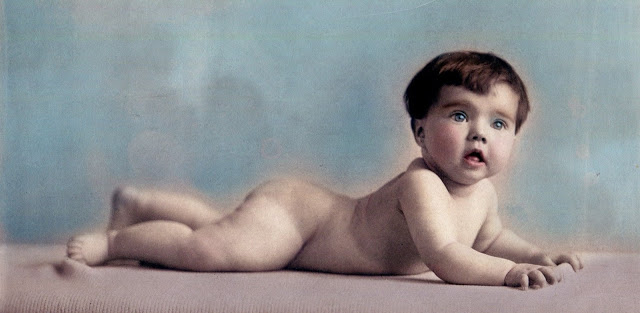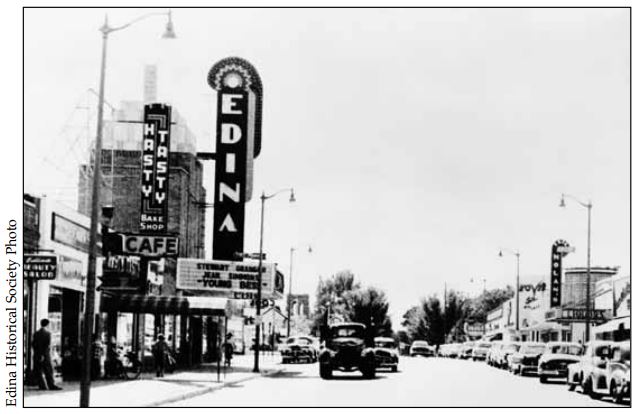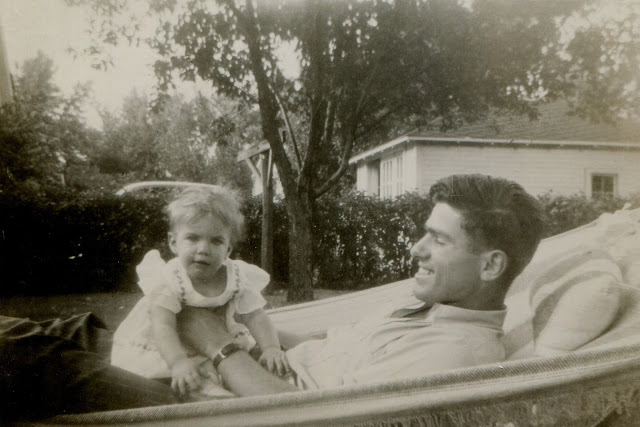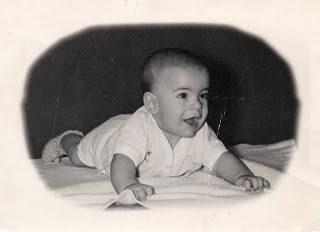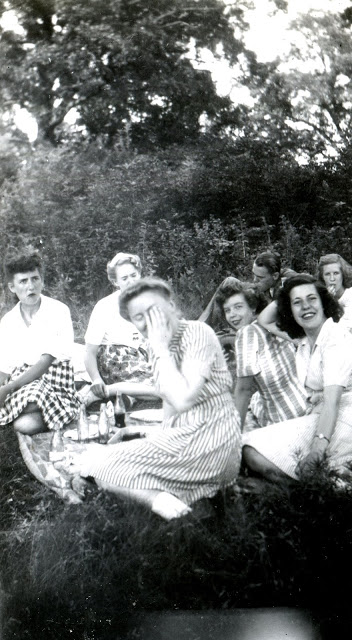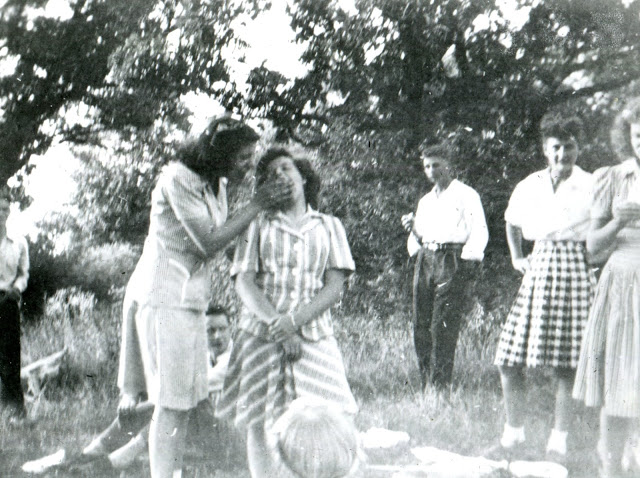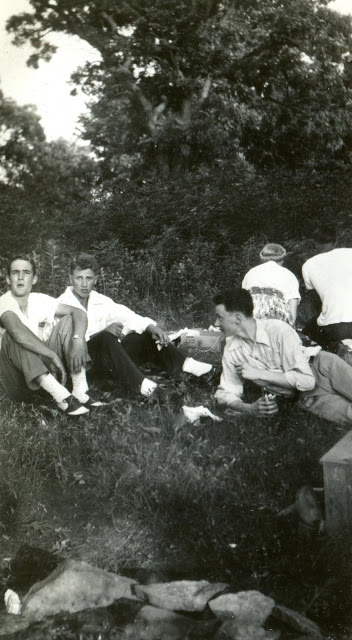In 1991, my dear Uncle Raymond Jensen (1918-1996), the husband of my father’s sister, Priscilla (Lohman) Jensen (1919-2005), sat down to capture the memories of 1951-1952, a particularly dramatic year in both the Jensen and Lohman families. Ray and Priscilla’s offer to help at the most difficult time in my dad’s life was a gift for which my family will be forever grateful.
THREADS OF LOVE
by Raymond C. Jensen
▂
I dedicate this book to my brother-in-law, Richard Lohman, who, in the face of despair and against all odds, persevered, and in so doing, became a help to numerous others who suffered losses similar to his own.
▂
Introduction
During the post war years of World War II, the lives of my brother-in-law’s family and my own had run relatively smooth. But on September 9, 1952 something happened to drastically change his life and the lives of our entire family. This is a story about the events that led up to that day as well as the events that took place in the months which followed.
My thanks go to Richard and Charlotte Lohman, Muriel Wood and my wife Priscilla for their willingness to share their memories of that time so long ago.
Raymond C. Jensen
1991
I
 |
| Priscilla (Lohman) & Raymond Jensen |
Because my wife, Priscilla, had gone out for the evening, I decided to do the dinner dishes. Perhaps subconsciously, I left the large stainless steel mixing bowl until last. The bowl, one out of a set of three, was given to us as a gift almost forty years ago and has held special meaning for us ever since.
As I washed the bowl almost lovingly, my thoughts drifted back to an event that happened on August 13, 1952. The occasion was our tenth wedding anniversary and one that neither of us will ever forget.
It all started when my brother-in-law, Dick Lohman, and his wife Connie called to ask if they could take us out to dinner and a movie after. They wanted to help us celebrate our anniversary. Needless to say, our answer was “yes.” In those days the extent of our going out to eat was usually determined by the number of White Castle coupons that we had collected from our families’ newspapers. So, as you can see, the prospect of being taken out to dinner and a movie without the children was an exciting one and something that we looked forward to with great anticipation.
Fortunately, Priscilla’s Grandma Libby was available to take care of our six children. Grandma had been living at our house ever since we moved in 1947. But instead of living with us, she had a light housekeeping room of her own in the back part of the house. Her room had a separate entrance, so she could entertain her friends and maintain her privacy. However, when she watched the children, she would open the common door between her room and ours and sit in her favorite rocker as she held our youngest child in her arms and watched the others play.
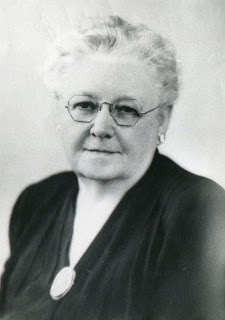 |
| Grandma Agnes Libby |
Grandma Libby loved little children and enjoyed doing the dishes. On occasion when we wanted to go to a movie, she would offer to wash the dinner dishes, so we could leave in time for the early show. This always made a hit with our two oldest children whose daily chore was to help wash and wipe the evening dishes.
 |
| Grandma Libby with Mark & Barbara Jensen |
While it wasn’t planned that way, having Grandma live at our house was mutually beneficial. She wasn’t in the best of health and seemed to find living with a family a comfort. On the nights that Priscilla had prepared a special dinner for our family, she would often dish up an extra plate and take it into Grandma so she wouldn’t have to cook that night. Grandma Libby was always grateful for this, just as we were for her loving care towards our children.
The night we had been looking forward to finally arrived. The children had eaten their supper and the youngest ones made ready for bed. At the pre-arranged time, Connie and Dick arrived in their 1939 Lafayette.
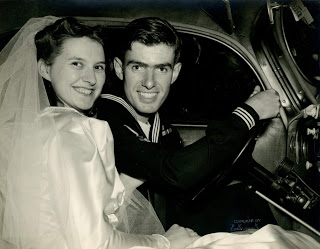 |
| Connie & Dick in their Lafayette on July 25, 1945 |
With a final admonition of, “Be sure to mind Grandma,” we said goodbye to the children and stepped into the rear seat of Connie and Dick’s car. As we drove off we felt pampered, as if we were being chauffeured to a swank restaurant. Our destination was the Port Arthur Cafe, a Chinese restaurant located on Lake Street and Hennepin Avenue. The restaurant was within half a mile of both Lake Calhoun and Lake of the Isles, which somehow made our date seem even more exciting.
The menu included both Chinese and American dishes, but I seem to remember that we all ordered Chow Mein. The Port Arthur was known for its Chinese cuisine, but as much as we enjoyed the food, we found our conversation even more enjoyable. Connie and Dick were a lot of fun to be with.
Not only that, the four of us had much in common. Their three children (a girl and two boys) were about the same ages as three of ours. Consequently, we felt comfortable sharing the joys – and sorrows – of parenthood as well as just being ourselves.
II
The fact that we were five years older than Connie and Dick made little difference in our relationship. But back in 1941 when I first became serious about Dick’s sister, Priscilla, I thought of Dick (called Richard by his family) more as her kid brother than as a prospective brother-in-law. This was especially true one day when I had stopped to pick her up for a date. Priscilla suggested we first go downstairs to see the room that Richard had built for himself in the basement. She was proud of her brother’s accomplishment. At any rate I agreed, and after looking over his handiwork, we took advantage of being alone and kissed each other. Suddenly we were startled by the sounds of laughter. Looking up we saw the faces of her brother and his friend peering at us through the basement window. When they saw that we recognized them, they quickly ran away, still laughing hilariously. For the moment I was both angry and embarrassed. I felt they had invaded our privacy. But after thinking about it for a while, I realized that they were just being kids and dismissed the incident as an immature prank.
 |
| Priscilla & Ray |
Just a few months later I asked Priscilla to marry me, and she said “yes.” We were very much in love, but because we knew my induction into the army was imminent, we decided to wait until my year of training was up. However, with the advent of Pearl Harbor, all that was changed. We now knew that I’d have to be in the army for the duration and that our plans for getting married would have to be altered.
During the summer of 1942 I was transferred to a casual camp to await orders into pre-flight school. Unsure of when I’d be called, I requested a furlough to go home and get married. Much to my surprise and delight, my furlough was granted. After catching the first bus to Los Angles I was able to make connections with an Eastbound train that was scheduled to arrive in Minneapolis in two and one-half days. Before leaving, I had wired Priscilla to let her know that I was on my way so she could go ahead with the wedding plans. Just two days after I arrived, Priscilla and I were married at the Vine Congregational Church on Thursday, August 13, 1942.
 |
| Ray and Priscilla’s Wedding, August 13, 1942 |
Richard was one of my groomsmen and for the first time I realized that he had become a mature young man. He had graduated from high school and even made plans to enlist in the Navy. Richard had also been dating Connie Stoep, a pretty brunette that he met during his sophomore year. Connie had a vivacious personality and, like Richard, loved being with people. Their relationship must have been serious because even after he began his boot training at the Great Lakes Training Center, he took a long train ride home every weekend so he could spend a few hours with Connie and his family.
 |
| Connie, Dick, Dick’s mother, Grace (Libby) Lohman |
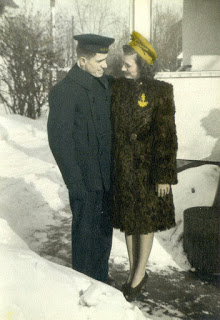 |
| Dick & Connie |
 |
| Dick and his big sisters: Priscilla & Muriel |
In 1943 Richard made his first voyage as a gunner on the troopship the U.S.S. Anderson. In July 1945, after having made several additional voyages to remote parts of the world, he came home to marry Connie, his high school sweetheart. But first he had called her from his base to ask if she’d like to get married. Her response was a wistful, “Yes – if you come home.” I think the thought of his coming home seemed almost too good to be true.
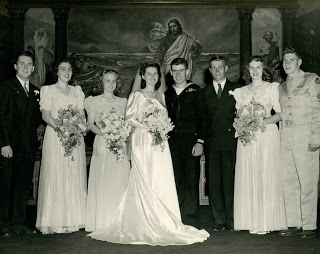 |
| Dick & Connie’s Wedding, July 25, 1945 |
But he did come home and after getting married and going on a short honeymoon, they took the train back to his base where they found a place to live until Richard had to leave on his next voyage.
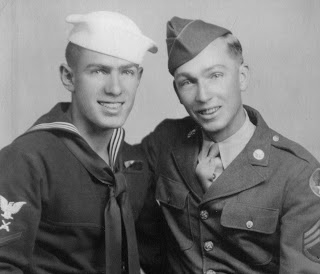 |
| Dick & Ray |
In November 1945, both of us were discharged from the service: he from exactly three years in the Navy and me from four years, four months and ten days in the Army. Dick came home to his new bride and I returned to my wife and two beautiful children. The world was finally at peace, and at last we were free to live the kind of lives that we had been longing for.
III
Our time together at the Port Arthur Cafe had gone by much too quickly. Soon we had to leave in order to get to the theater on time. Once more we got into the back seat of Dick’s car expecting to leave immediately. Much to our surprise, they handed us a gift box and a card instead. The box contained a set of stainless steel mixing bowls, something that Priscilla had always wanted but never felt free to buy. We were amazed at their generosity and appreciated such a thoughtful gift.
The movie we went to see was called Quo Vadis and was showing at the St. Louis Park Theater. The film, in part, was about the persecution of the early Christians by the Romans. It showed scenes of men and women being forced into the amphitheater of hungry lions while spectators watched and cheered. One scene showed the head of a man, his face still in a smile after his body had been dismembered by a ravenous lion. Needless to say, we were glad we saw the movie after dinner instead of before. The movie provided a lot of food for thought and as we drove home we wondered if our faith would be as strong as the faith of the early believers if we were persecuted as they were.
In spite of our evening ending on such a serious note, we enjoyed our night out with Connie and Dick. They made the event of our tenth wedding anniversary special – one that we’ll never forget.
IV
It would be difficult to put into words the appreciation I felt for my brother-in-law Dick and his wife Connie. Both of them were active in their church and their faith in God was made manifest by their generous spirit and willingness to help others. On more than one occasion we were the recipients of that help. I remember the time that Priscilla was in the hospital giving birth to our youngest son, Todd. In spite of having three small children of her own, Connie came over to our house to take care of our five children. One night when I came home from work, I found Connie preparing our evening meal. In the process of cooking and setting the table, she took time to play with the younger children. As they listened to their favorite 45 R.P.M. kid’s records, she danced with them hand in hand around the kitchen table. To this day I can still see them in my mind’s eye, singing and dancing in joyous abandonment.
 |
| Connie & Jeanne |
After dinner, Connie left to go home with her three children. I think that Dick picked them up on his way home from work. At any rate, she continued to come over every day until Priscilla came home from the hospital. Because there was less than a year between our new son and his older brother, Scott, the doctor told Priscilla that she could not lift Scott for three weeks. Once again Connie came to our rescue. Because I couldn’t afford to stay home from work, she offered to take care of Scott until Priscilla was strong enough to lift him again.
 |
| Connie, Jeanne, Dick |
Another example of Connie and Dick’s hospitality occurred back in 1949. This was the year they expected to move into their new home in St. Louis Park. But because their house wasn’t finished in time, they rented our upper duplex until the work on their new home could be completed.
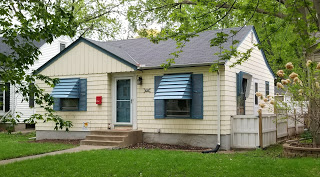 |
| 2821 Jersey Avenue now |
It was during this period of time that my younger cousin Earl showed up at our door without any advance notice. I had last seen Earl in 1937 when my father and I did some work on my uncle’s farm near Alden, MN. Now, twelve years later, at twenty-two years of age, he had evidently decided to leave home and hitchhike to Minneapolis. But Earl was a man of few words and gave no indication of where he was going or how long he intended to stay.
After visiting with him for a while we decided to ask him to stay for supper. It was getting late and we still didn’t know what his plans were. By the time we had finished supper we were both pretty sure that he had no place to stay for the night. The problem was that we had no extra sleeping space. With the two bedrooms occupied by our children and Priscilla and me sleeping in the dining room, we didn’t feel we could ask him to stay for the night.
Sometime during the evening, we introduced my cousin to Connie and Dick. Secretly we must have told them about the situation because after hearing about our dilemma, they graciously offered to sleep Earl in their upstairs apartment. Priscilla and I were greatly relieved and when they asked Earl if he’d like to stay, he gladly accepted. The following morning, after Connie had given him some breakfast, he said that he’d have to be on his way. Before leaving, my cousin thanked all of us, but I don’t remember that he ever said where he was going. Sometime later we learned from his mother that he had gotten married and settled down.
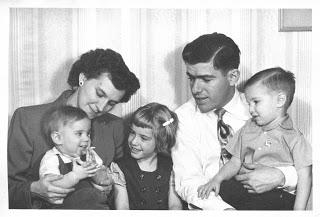 |
| Paul, Connie, Jeanne, Dick, Doug, Christmas 1951 |
When springtime arrived, Dick and I worked together on removing the upstairs storm windows and installing screens. Because the north side of our house was so close to the lot line, we had to put the extension ladders in our neighbor’s yard. When we had almost completed our work, our neighbor, Mr. Dagget, approached Dick and complained vehemently about our ladders being on his property. Instead of responding in kind, Dick said something to the effect that being neighbors, we didn’t think he’d mind. We wondered what the problem was because we had been very careful not to disturb his grass or flower beds.
Several months after Connie and Dick moved to St. Louis Park, our neighbors, the Daggets mysteriously moved out after dark. I remember them loading their possessions into a large truck and wondered why they were moving out at such a late hour. For weeks after, people came to our door to ask if we knew where they had gone. It seems that they had charged a lot of expensive items and skipped town without paying their bills.


